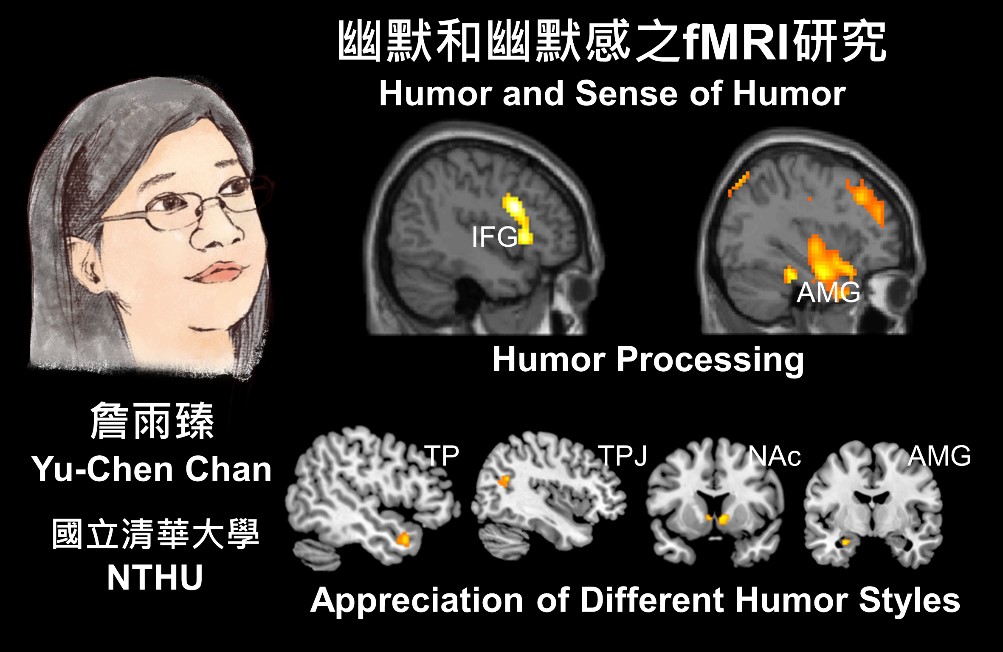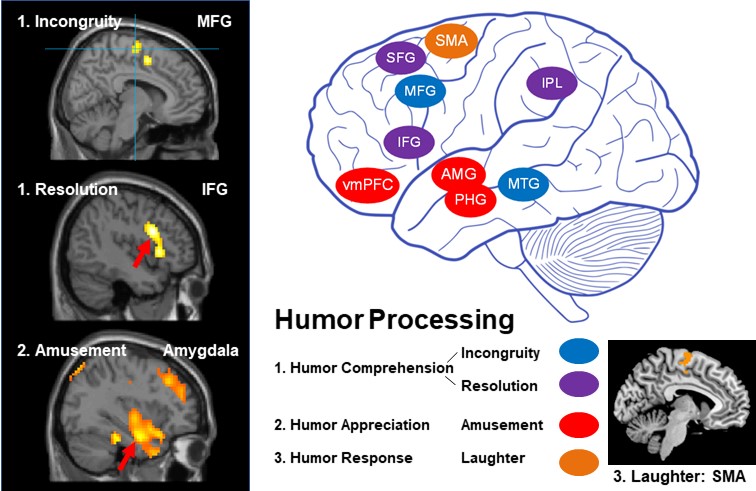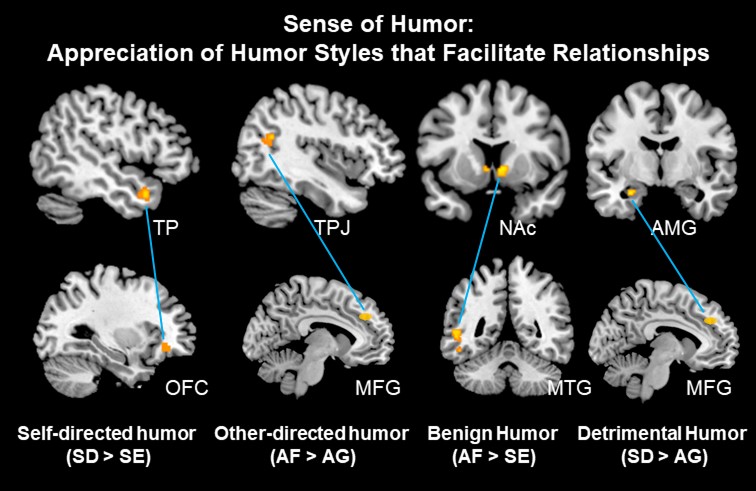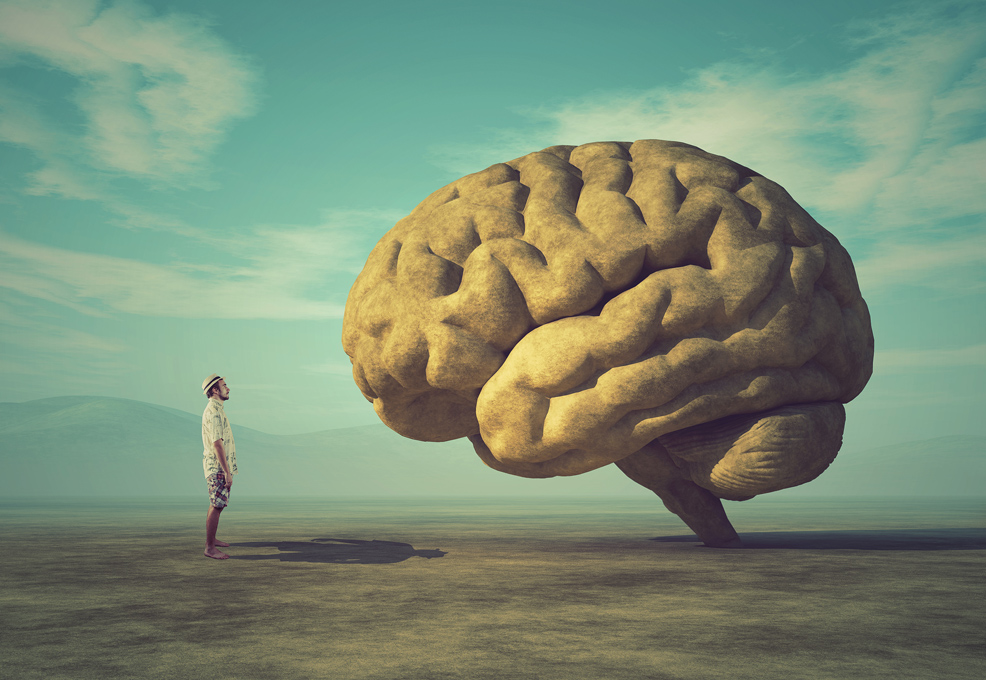Towards Smarter Medicine and Healthcare with AI

Author(s)
Yu-Chen ChanBiography
Yu-Chen Chan is an Associate Professor in the Department of Educational Psychology and Counseling at National Tsing Hua University (NTHU) in Taiwan, where she has set up the Cognition, Humor and Affect Neuroscience Laboratory (CHAN Lab). Her research interests include the investigation of humor, emotion, motivation, and, creativity using fMRI.
Academy/University/Organization
National Tsing Hua UniversitySource
https://doi.org/10.1016/j.neuroimage.2012.03.052 https://doi.org/10.1016/j.neuroimage.2012.10.019 https://www.nature.com/articles/s41598-018-33715-1 https://www.nature.com/articles/srep34580/-
TAGS
-
Share this article
You are free to share this article under the Attribution 4.0 International license
- LIFE SCIENCES
- Text & Image
- June 21,2020
“Humor” and a “sense of humor” are very different. Our team used functional magnetic resonance imaging to investigate the neural mechanisms underlying them. “Humor” is an experienced mental process that includes the comprehension of “incongruity” and “resolution,” followed by implicit feelings of amusement and explicit laughter. The detection of incongruities involves the middle temporal gyrus and medial frontal gyrus. The resolution of incongruities involves the inferior frontal gyrus, superior frontal gyrus, and inferior parietal lobule. The feeling of amusement involves the ventral medial prefrontal cortex, amygdala, and parahippocampal gyri. The laughter response involves the supplementary motor area. On the other hand, a “sense of humor” is a personality trait whereby one appreciates humor and uses humor production and coping strategies to make others laugh. Individual humor styles can be distinguished according to the “self/others” and “beneficial/detrimental” axes. The two dimensions create four distinct humor styles: self-enhancing humor (SE), affiliative humor (AF), self-defeating humor (SD), and aggressive humor (AG). Our team is the first to use “one-liner” jokes to examine the neural mechanisms underlying the appreciation of different humor styles. Temporal pole-frontal functional connectivity appeared more during appreciation of SD than of SE, while amygdala-frontal connectivity appeared more during the appreciation of SD than of AG. Nucleus accumbens-temporal connectivity appeared more during the appreciation of AF than of SE, while temporoparietal junction-frontal functional connectivity appeared more during the appreciation of AF than of AG. Finally, this study further develops the three-stage model, a crucial building block for subsequent studies.

The definitions of “humor “and “sense of humor” are very different. Humor refers to humor processing that consists of cognition, affect, and laughter, while a sense of humor refers to a personality trait related to the appreciation of humor. Our team used functional magnetic resonance imaging (fMRI) to investigate the neural mechanisms underlying each. “Humor” is an experienced mental process whereby one comprehends and appreciates ludicrous, comical, absurd, ridiculous or witty stories or scenarios which elicit the feeling of amusement, and induce a laughter response. The process of experiencing humor includes the comprehension of “incongruity” and “resolution,” followed by an appreciation of the implicit feelings of amusement, as well as the explicit behavior of the laughter response. In terms of the neural correlates of humor processing, the detection of incongruities involves the right middle temporal gyrus (MTG) and the medial frontal gyrus (MFG), associated with the detection of semantic conflicts and the storage of semantic information. The resolution of incongruities involves the left inferior frontal gyrus (IFG), the superior frontal gyrus (SFG), and the inferior parietal lobule (IPL), associated with semantic comprehension and integration. The feeling of amusement involves the left ventral medial prefrontal cortex (vmPFC), the bilateral amygdala (AMG), and the parahippocampal gyri (PHG), associated with the dopamine reward system. The laughter response involves the supplementary motor area (SMA), associated with the physical activity of smiling.

Meanwhile, a “sense of humor” is a personality trait related to the appreciation of humor, and uses humor production and coping strategies to make others laugh. Humor can make people laugh, facilitate social relationships and help to dispel tense situations. However, humor is a double-edged sword, and does not always elicit positive emotions. In particular, its inappropriate use can hurt others. Martin et al. (2003) distinguish between “self/others” and “beneficial/detrimental” axes, which together constitute individual humor styles. The two dimensions create four distinct humor styles: self-enhancing humor (SE), affiliative humor (AF), self-defeating humor (SD), and aggressive humor (AG). Previous studies used the “humor styles questionnaire” (HSQ) to measure different types of sense of humor. Our team instead used a series of “one-liner” jokes as stimuli. For example: “If each of my admirers were a strand of hair, I would be bald” (SD), and “If each of my admirers were a strand of hair, I would need two heads” (SE). We are the first to use “one-liners” to examine the neural mechanisms involved in appreciating the four humor styles. In Chinese culture, people appreciate humor styles that facilitate relationships with others (SD and AF) more than those which enhance the self (SE and AG). In terms of the neural correlates of a “sense of humor,” the temporal pole (TP)-frontal functional connectivity appeared more during the appreciation of SD than of SE, while the amygdala-frontal functional connectivity appeared more during the appreciation of SD than of AG. The nucleus accumbens (NAc)-temporal and midbrain-frontal functional connectivity appeared more during the appreciation of AF than of SE, while the temporoparietal junction (TPJ)-frontal functional connectivity appeared more during the appreciation of AF than of AG.

Whereas previous studies found a deficient sense of humor in people who fear being laughed at (Gelotophobics/Gelotophobes), the use of “one-liner” jokes as stimuli can introduce such people to humor appreciation. Finally, this study further developed the three-stage model of humor processing, a crucial building block for subsequent studies.
STAY CONNECTED. SUBSCRIBE TO OUR NEWSLETTER.
Add your information below to receive daily updates.




